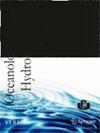绿色微藻小球藻对五氧化二钒纳米颗粒的防御反应
IF 1
4区 环境科学与生态学
Q4 OCEANOGRAPHY
引用次数: 0
摘要
摘要 虽然钒基纳米材料已在工业中得到广泛应用,但其对生态系统和生物体的影响还没有得到很好的研究。本研究采用水热法合成了五氧化二钒纳米粒子(V2O5 NPs)。利用 XRD、FT-IR、EDS、DLS、SEM 和 TEM 技术对获得的 NPs 进行了表征。随后,评估了 V2O5 NPs 对模式绿微藻小球藻的毒性效应。结果表明,V2O5 NPs 以剂量和时间依赖的方式显著减少了藻类的细胞数量和生物量。此外,流式细胞分析也证实了活细胞数量的减少。扫描电子显微镜显示,细胞在接触纳米粒子后发生了溶解和变形。与对照样本相比,光合色素和酚类物质的含量都有所下降。虽然粗毛藻中的非酶抗氧化系统表现出一般的作用,但包括超氧化物歧化酶(SOD)、过氧化氢酶(CAT)和抗坏血酸过氧化物酶(APX)在内的抗氧化酶却表现出与剂量相关的增加趋势。这些细胞间反应表明,抗氧化防御系统对 V2O5 NPs 诱导的氧化应激做出了反应。本文章由计算机程序翻译,如有差异,请以英文原文为准。
Defense responses of the green microalgae Chlorella vulgaris to the vanadium pentoxide nanoparticles
Abstract Although vanadium-based nanomaterials have found extensive use in industry, their influence on ecosystems and living organisms is not yet well investigated. In this study, hydrothermal methods were utilized for the synthesis of vanadium pentoxide nanoparticles (V2O5 NPs). The gained NPs were characterized using XRD, FT-IR, EDS, DLS, SEM and TEM techniques. Subsequently, the toxic effects of V2O5 NPs on the model green microalgae Chlorella vulgaris were evaluated. According to the obtained results, V2O5 NPs caused a significant reduction in cell number and biomass production of algae in a dose and time dependent manner. Moreover, flow cytometric analysis confirmed a reduction in the quantity of living cells. Scanning electron microscopy showed plasmolysis and deformation of the cells after exposure to nanoparticles. The photosynthetic pigments and phenolics content exhibited a decrease in comparison with the control sample. Although, non-enzymatic antioxidant system in C. vulgaris displayed an average action, antioxidant enzymes, including superoxide dismutase (SOD), catalase (CAT), and ascorbate peroxidase (APX) showed a dose dependent increasing trend. These intercellular reactions designated the activation of the antioxidant defense system in response to the induced oxidative stress by V2O5 NPs.
求助全文
通过发布文献求助,成功后即可免费获取论文全文。
去求助
来源期刊
CiteScore
1.70
自引率
11.10%
发文量
8
审稿时长
>12 weeks
期刊介绍:
Oceanological and Hydrobiological Studies is an international journal published by the Institute of Oceanography, University of Gdańsk in Poland. The journal has 4 issues per year and contains papers on all aspects of the marine environment and hydrobiology. All manuscripts are reviewed by editors and independent experts. Based on the referees'' recommendations, the Editor will make a decision on whether to accept a contribution. All articles are published in English. The journal is open to all matters concerning the water environment, thus providing the readers with a wide spectrum of topics in every issue.

 求助内容:
求助内容: 应助结果提醒方式:
应助结果提醒方式:


